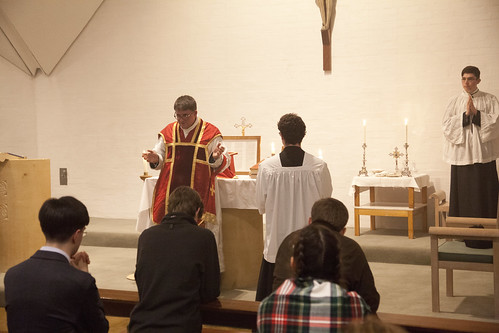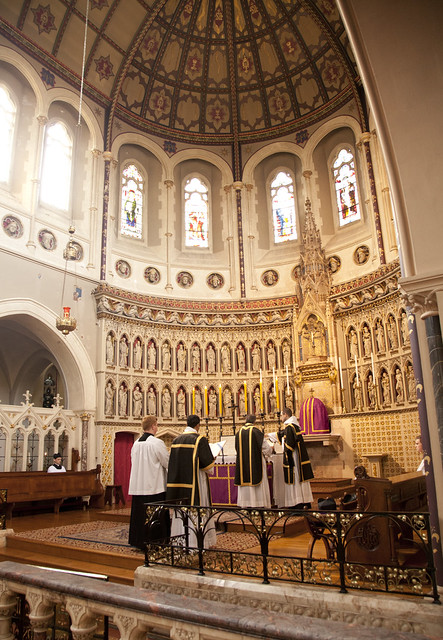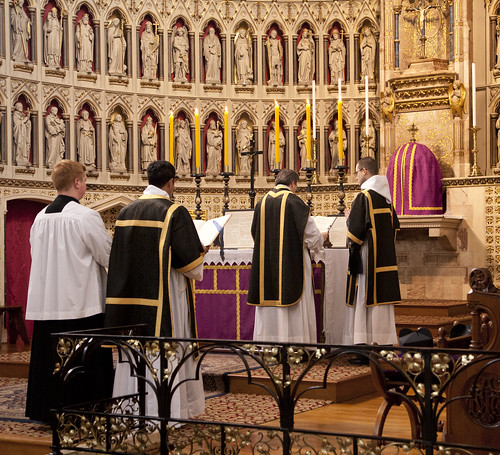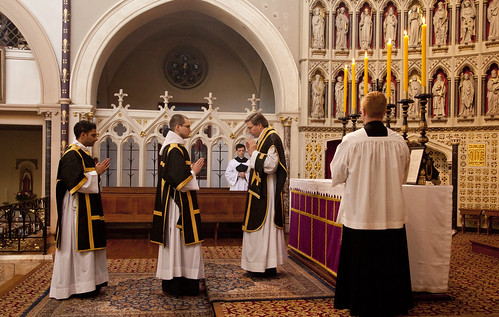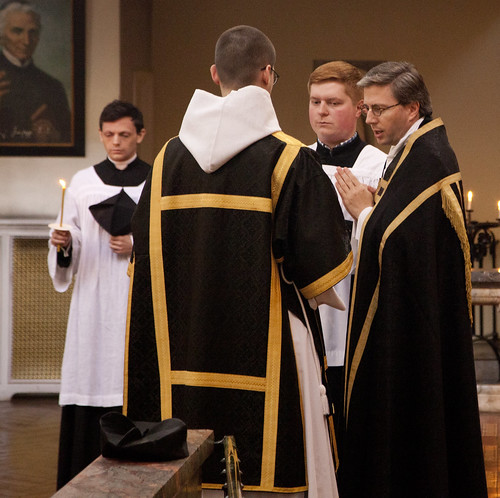Chairman's Blog
Iota Unum dates for 2023
 |
| Prof Pink giving a talk on a previous occasion. |
We are delighted to announce dates for the spring and summer.
Talks take place in the basement room at Our Lady of the Assumption Warwick Steet. Please enter it from the Golden Square side:
24 Golden Square, London, W1F 9JR
24th Feb Dr Caroline Farey
24th March Dr Sebastian Morello ‘Technocracy and the Process of Un-Personing’
29th April James Bogle
19th May Dr Joseph Shaw 'Clericalism and Clerical Abuse'
30th June Prof Thomas Pink 'Religion and Human Nature'
Doors open at 6:30pm, talk starts at 7pm. Refreshments provided. £5 on the door.
 |
| Fr Edward van den Burgh giving a talk. |
The problem of religious traditionalists
New Patrons for the Latin Mass Society
 |
| Official portrait of Sir Edward Leigh, By Chris McAndrew, via Wikipedia Commons |
Press Release from the LMS
The Latin Mass Society is delighted to announce two new Patrons: Sir Edward Leigh MP, and John Smeaton, former Chief Executive of the Society for the Protection of Unborn Children.
Sir Edward Leigh has sat as a Member of Parliament for Gainsborough since 1983. He is among the most respected Catholic members of Parliament, and has served as a Secretary of State and held many important roles in Parliamentary committees. He was knighted in 2013, is an Officer of the Légion d’honneur of France, and a Commander of the Order of the Star of Italy.
John Smeaton was Chief Executive of the Society for the Protection of Unborn Children (SPUC) from 1996 to 2021, and is the foremost pro-life campaigner in Britain. In 2013, he received the Cardinal John J. O’Connor Pro-Life Award from Legatus, an international organization of Catholic business leaders; and in 2015, he received the first Fr Paul Marx Award from Human Life International. He now leads Voice of the Family, which was founded in 2014 to defend Catholic teaching on the family, and publishes Calx Mariae magazine.
Sir Edward Leigh in response to the appointment said: ‘Through its work preserving and expanding access to the full richness of the Latin liturgy, the Latin Mass Society of England & Wales has proved to be one of the most beneficially influential bodies in the history of the post-conciliar Church.’
John Smeaton commented: ‘It is a great privilege to be invited to be asked to become a Patron of the Latin Mass Society whose distinguished service to the Church in England and Wales has so immeasurably benefited the Catholic community, including my family, for almost 60 years.’
Welcoming them, Joseph Shaw, Chairman of the Latin Mass Society, said: ‘I am delighted that Sir Edward and John Smeaton have agreed to become Patrons of the Society. Each in his own sphere represents the best of lay Catholic leadership in this country, playing key roles in public life over many decades with courage, perseverance, and faith. They join an already very distinguished group of Patrons, who have kindly associated themselves with the Society and its work for the traditional Latin Mass.’
Sir Edward and Mr Smeaton join five other Patrons of the the Latin Mass Society:
Prince Rupert Löwenstein and Colin Mawby KSG, the composer, were Patrons of the Society until their deaths in 2014 and 2019 respectively.
For more about our Patrons see the LMS website HERE
 |
| John Smeaton (image via 1Peter5) |
Vacancy for a General Manager at the LMS
The Latin Mass Society has a permanent office in London and a small paid staff: two full-time, one part-time, plus two freelancers. Our senior member of staff, the General Manager, holds a full-time position with important responsibilities, for the Society's major events, its online shop, and a lot of other things. Our current GM, Stephen Moseling, has been with us for about six years, and having reached pensionable age he is retiring. It has been a pleasure for me to work for him, and the Society has benefitted enormously from him experience and dedication. Our online shop, most obviously, is very much his creation, and has grown enormously over the last few years. Stephen has most recenty overseen a painless move of office, to a larger space.
From the LMS website.
Our present General Manager, Stephen Moseling, will reach retirement age this year and has taken the decision to retire at the end of March, therefore we are looking for a replacement.
The purpose of the role is to support the work of the Society’s volunteer activists, manage an office with a small staff, online shop, and website, and to be the first point of contact for many enquiries to the Society.
Reporting Lines
The General Manager reports to the Committee of the Society under the Terms of the Constitution, but will deal directly with the Chairman, Secretary and Treasurer on a day-to-day basis to ensure the efficient administration and development of the Society.
The Society's Bookkeeper and IT specialist, Office Assistant, the Editor of the Society’s magazine Mass of Ages, and the Communications Officer, report to the General Manager.
Responsibilities
1. To manage the operations of the Office on a day-to-day basis: to supervise the employees of the Society; to make recommendations for the recruitment of replacement or additional staff, to ensure that the work of the Society’s office is carried out efficiently and to report any difficulties to the Officers and Committee; to keep a record of staff attendance and punctuality.
2. To co-ordinate or assist in the organisation of flagship events including training events, retreats, important Masses and Pilgrimages, the Annual General Meeting, and the production of the annual Accounts.
3. To support the Society’s network of Local Representatives.
4. To make recommendations to the Committee, particularly concerning development, the generation of increased publicity, membership and income, and the timely control of expenditure.
5. To attend Committee meetings and other meetings, including with outside bodies, as required by the Committee, and to produce reports and minutes for these meetings.
6. To oversee the production of the Society’s quarterly magazine, Mass of Ages.
7. To fulfil such other activities as may reasonably be from time-to-time required.
The ideal candidate will demonstrate:
- Experience of managing an office
- Experience of book selling to a Catholic market
- Experience of event planning
- Experience of working under pressure
- Experience of working independently and in a small team
- Excellent interpersonal skills
- A good knowledge and understanding of the UK and international Catholic environment and the Traditional Latin Mass
Salary: £45,000 per annum
Application by CV and covering letter (hard copy or email) to Stephen Moseling, General Manager, The Latin Mass Society, 9 Mallow Street, London EC1Y 8RQ
stephen@lms.org.uk
Closing date for applications: Tuesday, 31st January 2023. Interviews will take place in London on Thursday, 9th February 2023.
The Job Specification can be downloaded HERE.
Farewell, Pope Benedict: official statement of the LMS
 |
| From Wikipedia Commons. |
Statement on the death of Pope Benedict XVI
The Latin Mass Society learns with deep sorrow of the death of the Pontiff Emeritus, Benedict XVI, Joseph Ratzinger.
As a theologian, as Prefect of the Congregation for the Doctrine of the Faith, and as Pope, he made an outstanding contribution to the life of the Church, in ways which will continue to be felt far into the future.
Catholics attached to the Traditional Mass have a particular motive for gratitude towards him. In his writings before his election as Pope he laid indispensable foundations for the rehabilitation of the Church’s ancient Mass, which had been banished to a precarious existence on the periphery of the Church’s life, its supporters treated—as he himself expressed it—like ‘lepers’. As Pope, his Apostolic Letter Summorum Pontificum, which declared that the older Missal has never been abrogated, transformed attitudes towards it, and brought it back into the heart of the Church. For a generation of priests and laity, Pope Benedict’s action remains the decisive influence on how they see the question.
Pope Benedict’s public actions reflected a great sensitivity to the liturgy, a comprehensive mastery of theology, and an intellectual honesty and courage based on profound humility.
The Latin Mass Society will be organising a Requiem of suitable solemnity for Pope Benedict in due course.
Requiem æternam dona eis, Domine, et lux perpetua luceat eis.
Latin Mass Society: position open for Communications Officer
We have a vacancy for a Communications Officer
As a consequence of the impending departure of Clare Bowskill as the Society's Publicist/Communications Officer, we are seeking a replacement.
Clare has done outstanding work for the Society - often in difficult circumstances - during the time she has been with us and we are extremely grateful to her.
Working with the Society’s General Manager, Trustees, and local activists, the Communications Officer will develop a proactive communications strategy using social media and mainstream media to promote the Society, its events, and its campaigns, and to promote membership and fundraising. The Communications Officer will also be able to react to events and news stories affecting the Society, to present the Society’s position and protect its reputation.
Attendance at some key events is essential.
Status: Self-employed. Hours: variable, averaging 10 hours a week. Salary: £7,000 pa. It is envisaged that the Communications Officer will work mainly from home.
Main duties and responsibilities
• Maintain on the Society’s website and social media accounts a flow of news, announcements, videos, and developing resources pages
• Develop promotions for LMS events using different channels (advertising, press coverage, social media, flyers)
• Coordinate membership and fundraising campaigns
• Cultivate relationships with people in the social media and Catholic and secular press (e.g. Catholic Herald, EWTN, bloggers, Catholic journalists, prominent Catholics)
• Put the Chairman and/or leading members of the Society forward for interviews, provide quotations, or compose articles for various media
• Ensure that journalists, bloggers etc. are invited to our major events
• Evaluate the success of press and publicity activity to aid future planning.
The ideal candidate will demonstrate:
- Significant experience of managing digital communications across a variety of social media.
- Experience of preparing press materials including Press Releases and relevant media for publicity.
- A basic knowledge of graphic design for print and digital content along with basic video editing skills.
- Experience of working under pressure
- Experience of working independently and in a small team
- Excellent and persuasive interpersonal skills
- Creative written communication skills
- A good knowledge and understanding of the UK and international Catholic environment and the Traditional Latin Mass
Application by CV and covering letter (hard copy or email) to Stephen Moseling, General Manager, The Latin Mass Society, 9 Mallow Street, London EC1Y 8RQ stephen@lms.org.uk
Closing date for applications: Friday, 30th December 2022. Interviews will take place in London in January.
You can download a pdf of the job specification HERE.
The Traditional Mass at the Oxford University Catholic Chaplaincy
David Lloyd, Requiescat in pace
In paradisum deducant te angeli.
Support the Latin Mass Society
Bogle and Morello on the Monarchy
The article by our friend, Theo Howard, entitled Monarchy and the Great Silence, published here at OnePeterFive, contains assertions that we believe are serious errors, which misrepresent the true position of the British monarch, not least the late Queen Elizabeth II.
Truth should be the first concern of Catholic journalists and writers, and so we wish to respond to Howard’s piece in fraternal charity for the sake of the truth.
Firstly, from a practical perspective, it is our concern that Howard’s article could do real harm by having the effect of encouraging secular republicanism (the only actual alternative available today) through the spreading of untruths, and serve to sour relations between nationalists and monarchists, particularly in communities where the issue is sensitive and even explosive. After all, it was not long ago that our United Kingdom was in conflict within its territories, namely in Northern Ireland, precisely over the question of whether that part of the Kingdom ought to be under the Monarchy or under a republic.
Annual St Benet's Hall Requiem

The first time I proposed such a Mass, to the last Master of the Hall who was a monk, Fr Felix Stevens, refused to allow it in the Hall chapel. However, I tried again with his successor, and it became an annual event.
The deacon was Dom Stanislaus Mycka of Farnbrough Abbey; the subdeacon was Br Joseph of the London Oratory. Mass was accompanied with chant by the Schola Abelis under Daniel Tate.
Support the Latin Mass Society




